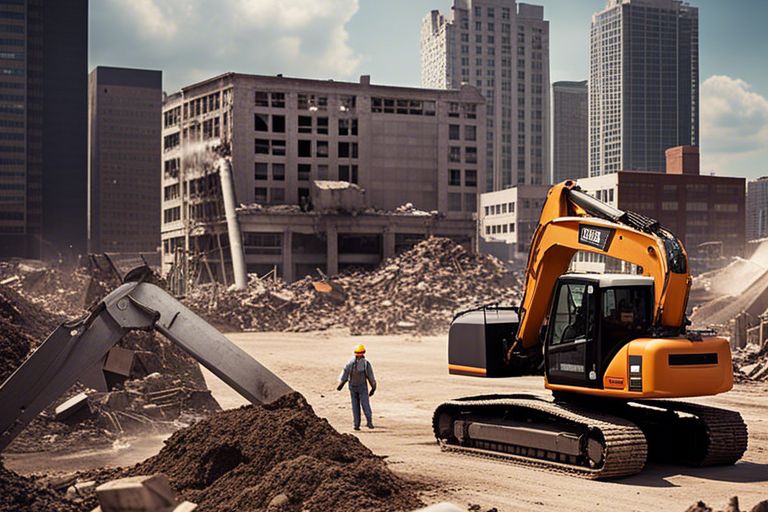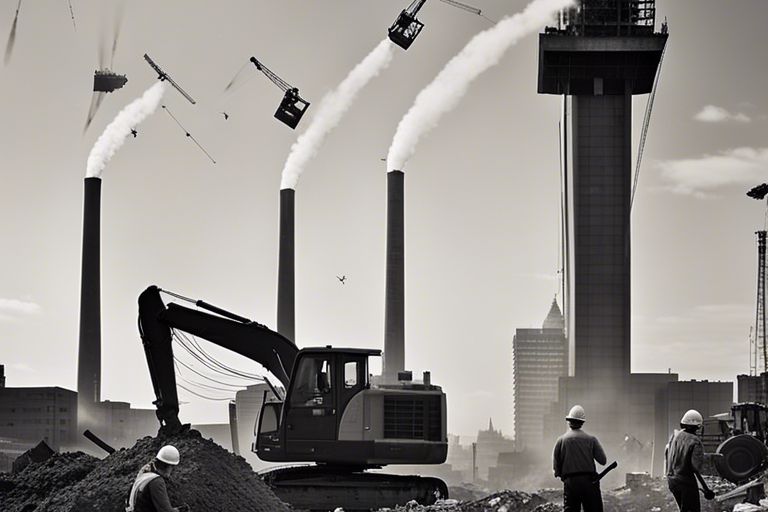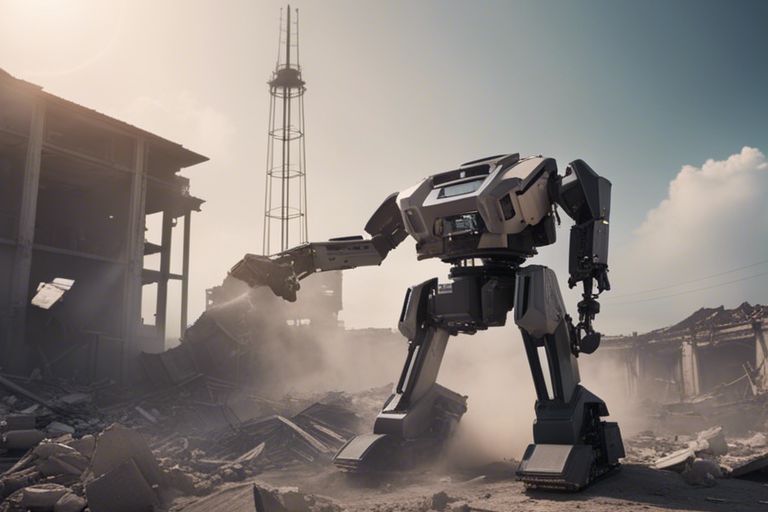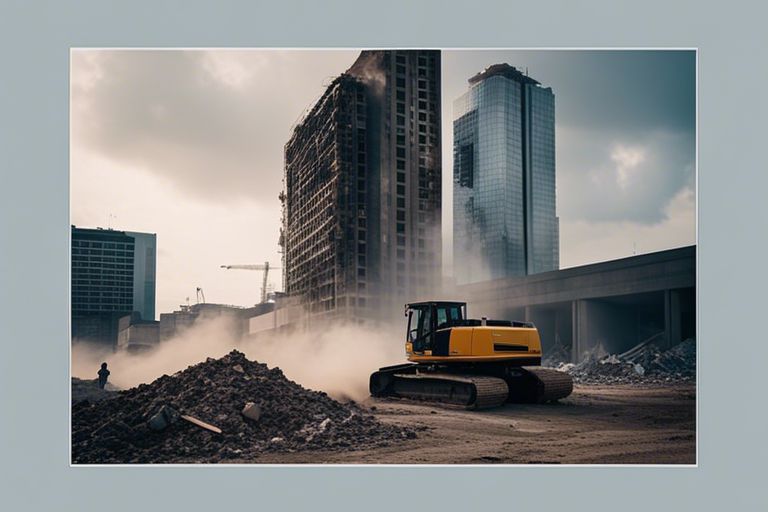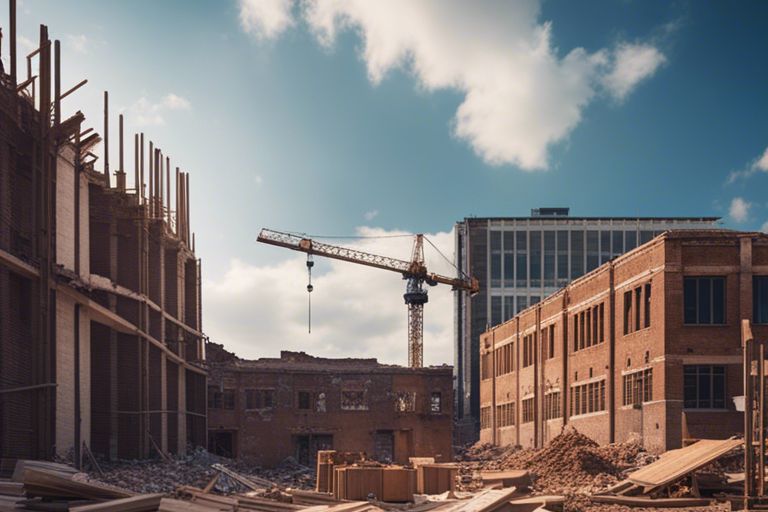Demolition, the process of tearing down buildings and structures, has evolved significantly over the years. What once involved manual labour and hand tools has now transformed into a high-tech and precision industry. From the ancient Romans using manpower to bring down structures to the development of explosives in the 19th century, demolition has always held a dangerous yet intriguing allure. Today, with the advancements in technology such as cranes, wrecking balls, and implosion techniques, demolition has become more efficient and controlled than ever before. Despite the risks involved, the history of demolition showcases how this industry has adapted and thrived, embracing new methods and materials to shape the world we live in.
Key Takeaways:
- Diverse Techniques: The history of demolition showcases a transition from traditional manual methods to advanced high-tech solutions.
- Evolution of Safety: With technological advancements, safety measures in demolition have significantly improved, reducing risks to workers and nearby communities.
- Sustainability Focus: Modern demolition practices focus on recycling and reusing materials, contributing to a more sustainable approach in the construction industry.
Early Demolition Techniques
Manual Labor and Early Tools
Before the advent of modern machinery, demolition relied heavily on manual labour and basic tools. Workers would use hand tools such as hammers, chisels, and crowbars to dismantle structures brick by brick. This method was time-consuming, physically demanding, and often dangerous. To learn more about how machines have replaced jobs throughout history, check out How Machines Replace Jobs Throughout History.
The Role of Fire in Structural Demolition
Fire has played a significant role in structural demolition throughout history. The use of fire to weaken and collapse buildings dates back to ancient civilisations. By setting fire to wooden supports or using controlled burns, demolition workers were able to bring down structures more efficiently. However, the technique was extremely risky and often led to uncontrolled fires, putting both workers and surrounding areas in danger.
The Industrial Era
The Industrial Era marked a significant shift in the demolition industry, as advancements in technology revolutionised the way structures were dismantled. Steam-powered machinery became the go-to choice for demolishing large buildings, offering increased efficiency and speed compared to traditional manual methods. This era saw the rise of wrecking balls and explosives being regularly employed for demolition projects.
One of the most important developments during the Industrial Era was the introduction of cranes in demolition work. These powerful machines made it possible to reach greater heights and tackle more complex structures with precision. However, the use of explosives also became more common during this time, introducing a dangerous element to the industry.
Despite the risks involved, the Industrial Era brought about a positive change by significantly reducing the time and labour required to demolish buildings. This led to a boom in urban redevelopment projects and the creation of modern city landscapes. The competitive nature of the industry also drove companies to innovate and improve their techniques, pushing the boundaries of what was possible in demolition.
FAQ
Q: What is demolition?
A: Demolition is the process of tearing down buildings and structures, either manually or with the use of advanced machinery, to make way for new construction or to remove unsafe structures.
Q: How has demolition evolved over time?
A: Demolition has evolved from manual labour techniques involving basic tools like hammers and chisels to high-tech methods utilising hydraulic excavators, wrecking balls, and explosives.
Q: What are the different methods of demolition?
A: The different methods of demolition include implosion, where explosives are strategically placed to bring down a building in a controlled manner, and deconstruction, which involves carefully dismantling a structure to salvage materials for recycling.
Q: What are the key safety considerations in demolition work?
A: Key safety considerations in demolition work include thorough planning, proper training for workers, the use of personal protective equipment (PPE), ensuring structural stability, and managing hazardous materials such as asbestos.
Q: How does modern technology impact the demolition industry?
A: Modern technology has revolutionised the demolition industry by increasing efficiency, precision, and safety. Advancements in equipment, such as robotic demolition machines and drones for site surveys, have made demolition projects more sustainable and cost-effective.

